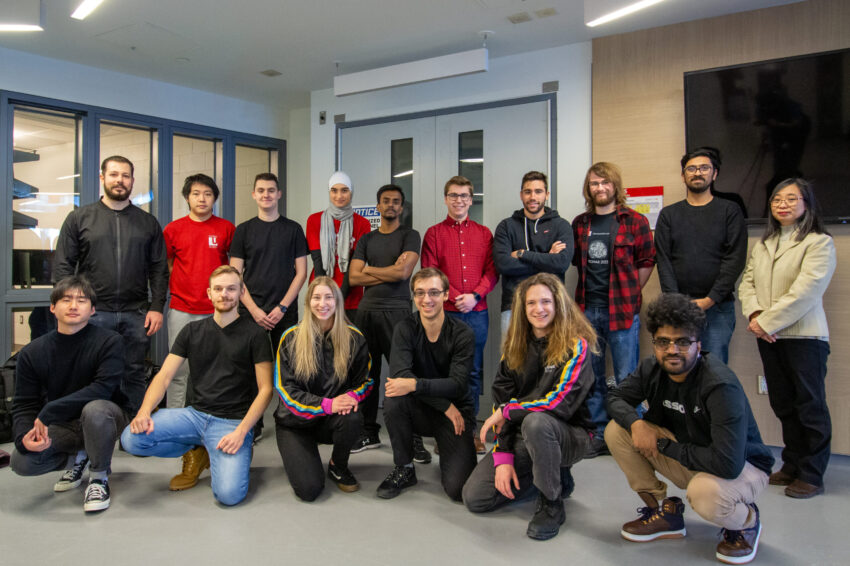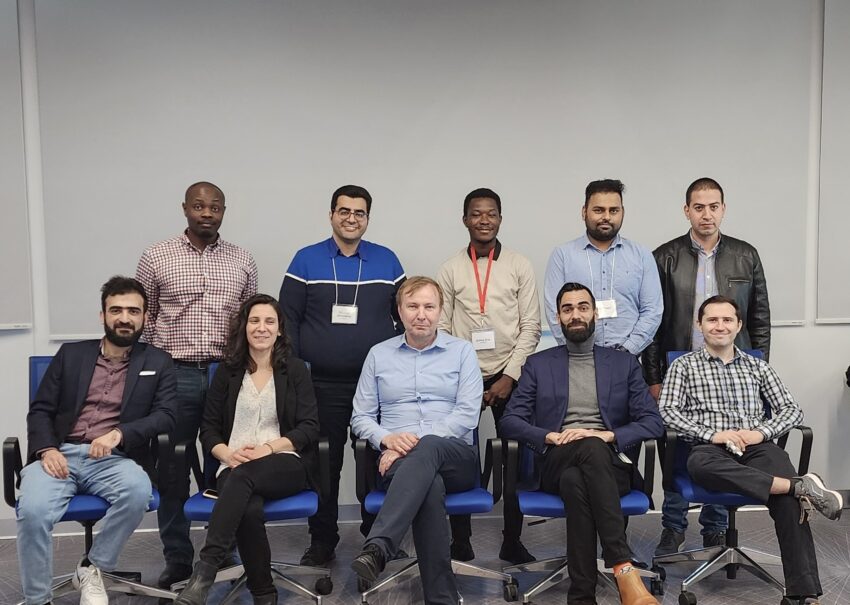Canadian Space Agency funds three Lassonde professors driving space innovation
Tags:

York University’s Lassonde School of Engineering is reaching new heights in space research as three of its researchers were awarded funding from the Canadian Space Agency (CSA) Flights and Fieldwork for the Advancement of Science and Technology (FAST) program. As home to Canada’s only Space Engineering program, Lassonde is uniquely positioned to lead in this area.
This funding initiative is designed to advance research in space science and technology, supporting daring and innovative projects aimed at transforming the field. The CSA FAST program is particularly beneficial for student researchers as it provides unique opportunities to gain hands-on experience with space-like missions. Students not only enhance their technical skills, but also gain exposure to cutting-edge technologies, preparing them for future careers in the space sector.
Learn more about funding recipients at Lassonde and their projects:
Daytime Star Tracker Design and Demonstration for Space Situational Awareness (SSA)
Led by: Regina Lee, professor, Earth & Space Science & Engineering

Within Canada, space situational awareness (SSA) has been recognized as one of the top priorities for space research and activities. This concept refers to the detection, tracking, identification and characterization of resident space objects (RSOs) which have the potential to damage various space systems and technologies, with immediate impact on crucial activities such as navigation, communication and climate monitoring.
Professor Lee’s CSA FAST project aims to address this issue througn the development of a low-cost wide field-of-view (FOV) optical system for RSO detection. This initiative builds off of previous work from Professor Lee and her research team which involved the development and testing of a dual-purpose camera system. To assess its function, the system was launched to the stratosphere where it surveyed the stars and captured images of passing satellites and space debris.
With funding from the CSA FAST program, Professor Lee and her students are equipped to further advance this innovative technology. Their next steps are to develop a more compact camera system, capable of real-time image processing for space surveillance in challenging lighting conditions. To achieve this, the team will create a star field simulator to mimic the complex space environment, integrate an AI-driven alogrithm designed to detect space objects in low-light conditions and implement real-time adaptive camera controls to adjust for varying illumination.
The team also aims to mobilize their research through community engagement and artistic approaches, elevating public knowledge and awareness of space sustainability. Through these efforts, the project aspires to both enhance technological capabilities and cultivate a culture of responsibility in the quest for sustainable space exploration.
Nanobubble Technology for Gas-Liquid Enhancement in Food Growth Applications for Spaceflight Environments
Led by: Marina Freire-Gormaly, assistant professor, Mechanical Engineering

Through support from the CSA FAST program, Professor Freire-Gormaly is set to advance nanobubble technology, extending applications to both terrestrial and space environments.
Nanobubbles are tiny gas-containing cavities with unique physical and chemical properties, making them useful for a range of applications like wastewater treatment, cosmetics and agriculture. For example, they can enhance plant growth and nutrient absorption by providing oxygen supply.
Specifically, Professor Freire-Gormaly’s project will focus on exploring how nanobubble technology can be applied to promote plant growth in space agriculture, thereby tackling the challenge of food production under complex space environments. Key research objectives include broadening the range of gases used to create these versatile bubbles, standardizing their characterization methods and assessing their durability in spaceflight environments.
This initiative will also provide invaluable training opportunities for students, preparing the next generation of scientists and engineers. By engaging directly with cutting-edge research and technology, these students will gain hands-on experience and crucial skills that will help shape their careers and drive future innovation.
Simulating Microgravity in Understanding Bioprinting Process for Wound Healing in Space
Led by: Aleksander Czekanski, professor, Mechanical Engineering

Professor Czekanski’s project represents a groundbreaking leap in both space medicine and bioprinting technology, aiming to transform the standard of wound treatment during space missions.
As Canada’s plans for space exploration become greater, so do the risks of human injury, including skin burns and radiation damage. Unfortunately, storage limitations of spacecraft complicate the transportation and availability of medical supplies needed to treat such injuries, underscoring the urgent need for innovative solutions in space medicine. To tackle this challenge, Professor Czekanski will apply his interdisciplinary expertise to explore the use of bioprinting for rapid, on-site skin repair to heal astronaut wounds.
Bioprinting in space presents challenges far beyond those faced on Earth due to unique conditions like zero and micro gravity. To overcome these barriers, this project aims to develop a fundamental understanding of the way bio-printed skin behaves in space-like conditions. This knowledge will be used to inform the development of a bioprinting prototype specifically designed for use in space environments and leveraged with computational modelling and AI-driven techniques.
This pioneering initiative aligns with NASA’s Lunar Gateway mission, helping contribute to Canada’s efforts toward establishing a stronger presence in space. As the nation prepares for more distant and ambitious missions, this research is poised to play a crucial role in ensuring that astronauts receive effective, on-the-spot care, ultimately supporting the success of future space exploration.
As these three projects take flight, they are well-positioned to make an impact on current and future space research and technology, while helping position Canada as a leader in the field. Each project underscores Lassonde’s dedication to pushing the boundaries and leading innovation in space science and engineering.